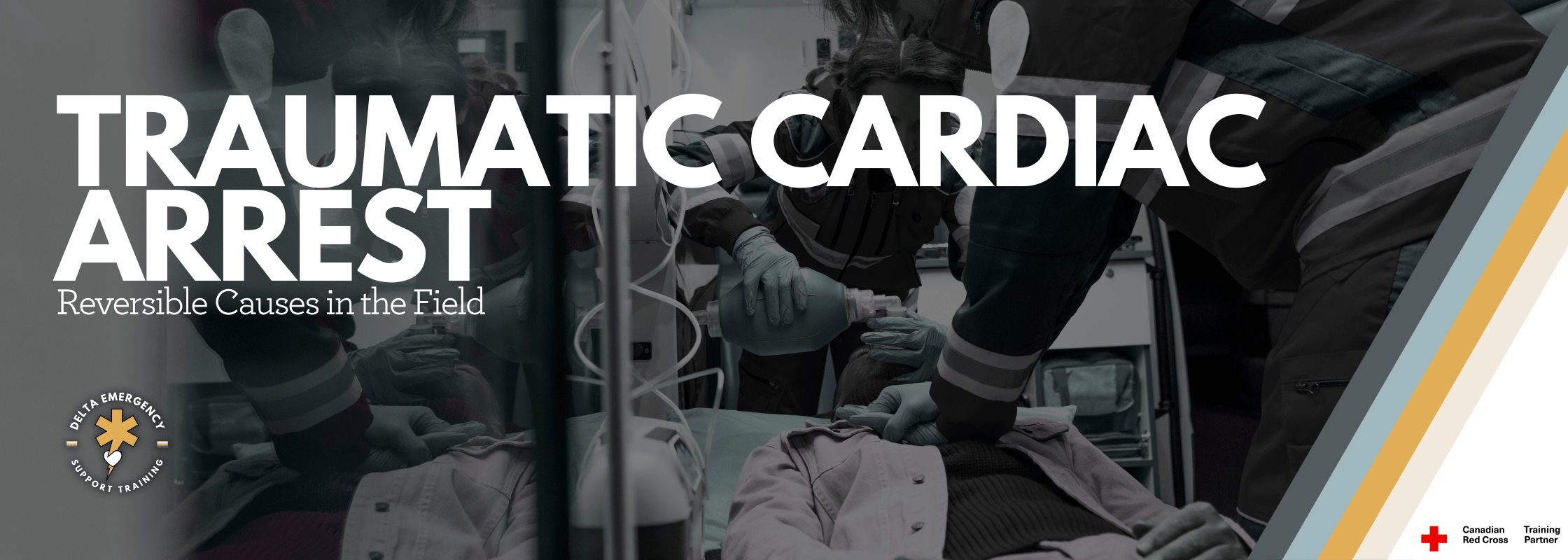Traumatic Cardiac Arrest: What Every Professional Responder Should Know
/Traumatic cardiac arrest (TCA) represents one of the most challenging situations in prehospital care. Outcomes are often poor, but when managed rapidly and effectively, survival with good neurological recovery is possible. This blog explores what TCA is, its causes, assessment and treatment priorities, and best practices for professional responders in Canada.
What Is Traumatic Cardiac Arrest?
A traumatic cardiac arrest occurs when a patient’s heart stops as a direct result of major trauma. This trauma can be blunt (such as falls or motor vehicle collisions) or penetrating (such as gunshots or stab wounds).
Unlike medical cardiac arrests, TCA often stems from reversible physical causes rather than primary heart dysfunction. The most common reversible causes include:
Severe hemorrhage (uncontrolled bleeding)
Hypovolemia (loss of circulating volume)
Hypoxia (insufficient oxygen supply)
Tension pneumothorax (collapsed lung causing pressure on the heart)
Cardiac tamponade (blood filling the pericardial sac and compressing the heart)
How Common Is TCA and What Are the Survival Trends?
Traumatic cardiac arrests are less common than medical arrests but are often more complex. Historically, survival rates have been extremely low—typically below 2%. However, in cases where the underlying cause is rapidly identified and corrected, patients can and do survive, especially when there are early signs of life or immediate advanced care.
Outcomes tend to be more favorable in penetrating trauma compared to blunt trauma, largely due to the speed at which reversible causes can be treated.
Key Priorities in Managing TCA
When seconds matter, responders must focus on interventions that directly address reversible causes. The following priorities guide professional care:
PriorityActionPurposeControl Hemorrhage / HypovolemiaApply direct pressure, tourniquets, wound packing, or pelvic binders.Prevent further blood loss and restore perfusion.Airway and OxygenationClear the airway and ventilate effectively. Use supraglottic or advanced airways if trained and authorized.Correct hypoxia, one of the leading causes of TCA.Relieve Mechanical ObstructionsPerform needle decompression for tension pneumothorax or use a chest seal for open chest wounds.Restore normal breathing and heart function.High-Quality CPROnly once reversible causes are being managed. Focus on effective compressions with minimal interruptions.Maintain perfusion if reversible causes have been addressed.Rapid TransportTransport quickly to a trauma centre if signs of life are present.Definitive care is essential for survival.
Trauma Type and Approach
Penetrating Trauma
Penetrating injuries, such as gunshots or stabbings, can cause localized damage but often have a shorter timeline to intervention. Quick chest decompression, bleeding control, and airway management can make a significant difference in survival outcomes.
Blunt Trauma
Blunt trauma, such as from high-impact collisions or falls, often causes widespread internal injuries and massive bleeding. Survival rates are generally lower, and early recognition of futility is crucial when there are no signs of life and prolonged downtime.
Canadian Best Practices and Field Considerations
Canadian EMS and paramedic protocols emphasize a systematic, cause-driven approach to TCA management:
Address all reversible causes simultaneously.
Control bleeding, relieve pneumothorax, and manage airway without delay.Obtain IV/IO access and administer fluids as indicated for hypovolemia.
Perform bilateral needle decompressions if chest trauma is suspected.
Apply pelvic binders when pelvic fractures or major lower-body trauma are likely.
Minimize scene time. Rapid transport to a trauma centre remains a priority.
Epinephrine is often deprioritized, as it offers limited benefit when the heart has stopped due to physical injury rather than electrical failure.
Termination of Resuscitation (TOR) may be considered if there are no signs of life, asystole, and extended downtime with no reversible cause found.
Common Challenges for Responders
Traumatic cardiac arrests demand rapid thinking and precise teamwork. Common challenges include:
Identifying reversible vs. irreversible causes. It can be difficult to determine whether the arrest is trauma-induced or secondary to a medical event.
Time pressure. Every second counts, especially when massive hemorrhage or tension pneumothorax is suspected.
Limited prehospital tools. Not all regions permit advanced procedures like thoracotomy or pericardiocentesis.
Balancing interventions. CPR may worsen bleeding if hemorrhage is uncontrolled, so priorities must be reassessed continually.
Transport logistics. Long transport times may influence whether resuscitation efforts continue.
Step-By-Step Approach to Traumatic Cardiac Arrest
Ensure scene safety and don PPE.
Rapidly assess mechanism and timeline (blunt vs. penetrating, time of arrest, signs of life).
Control massive bleeding immediately. Use direct pressure, tourniquets, or wound packing.
Manage the airway and ventilate. Provide oxygen and ensure adequate chest rise.
Relieve chest pressure. Perform needle decompression and apply chest seals as indicated.
Provide fluid resuscitation. Administer IV or IO fluids per protocol.
Perform CPR if appropriate. Begin once reversible causes are actively addressed.
Transport rapidly to a trauma facility if ROSC occurs or if the patient shows any signs of life.
Consider termination if no response and all reversible causes have been managed.
Why TCA Differs from Medical Cardiac Arrest
In medical cardiac arrest, the primary issue is usually electrical or metabolic failure of the heart. In TCA, the heart often stops because of physical factors such as massive bleeding or chest injury. As a result, standard interventions like defibrillation or epinephrine are secondary to correcting the underlying mechanical or circulatory issues.
In short — treat the cause, not just the rhythm.
Realistic Scenarios
Penetrating Chest Trauma: A patient with a gunshot wound to the chest is pulseless on arrival. Responders immediately apply a chest seal, decompress the chest, manage the airway, and control external bleeding.
Blunt Pelvic Trauma: Following a vehicle collision, the patient has severe pelvic instability and no pulse. A pelvic binder is applied, external bleeding controlled, airway secured, and fluids initiated during transport.
Final Thoughts
Traumatic cardiac arrest demands composure, coordination, and deep understanding of trauma physiology. While survival rates remain low, outcomes improve significantly when responders rapidly identify and correct reversible causes.
Every second counts — and with the right interventions, professional responders can give trauma patients their best chance at survival.




